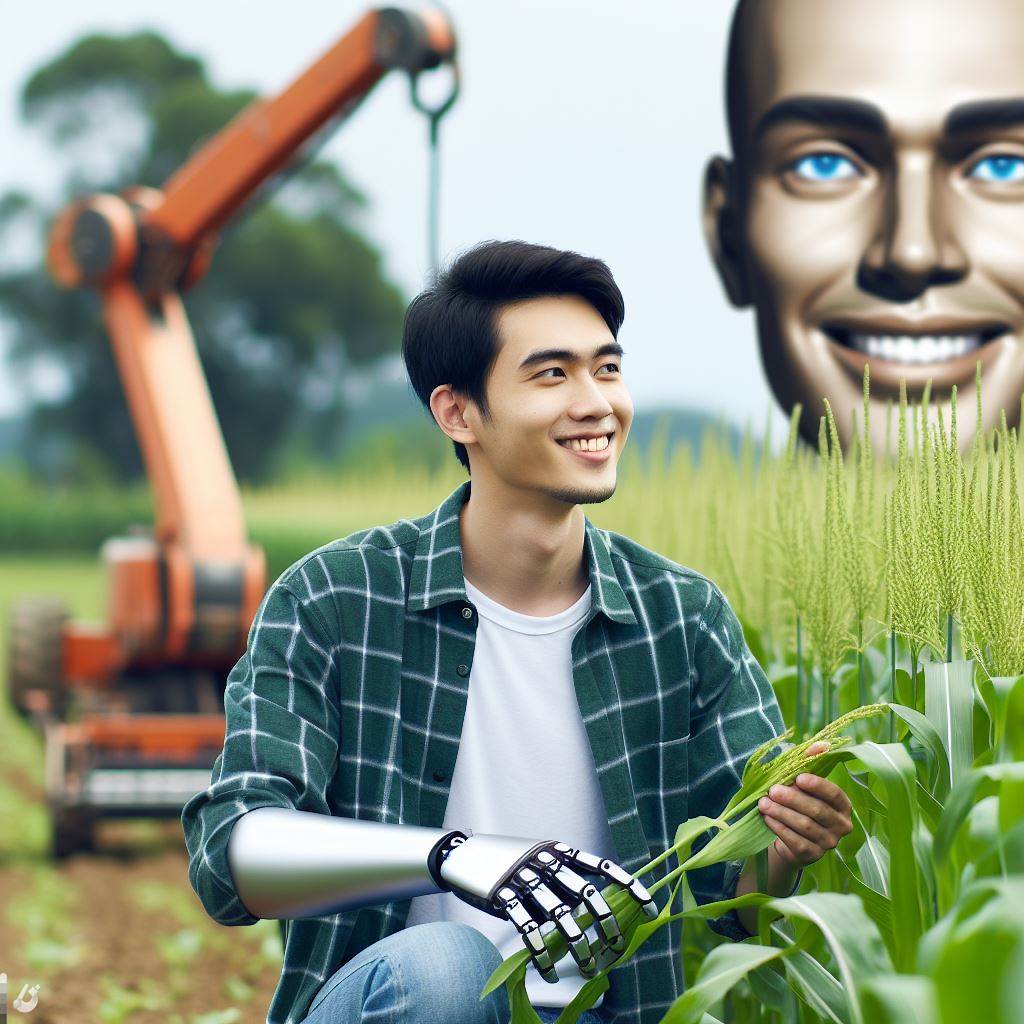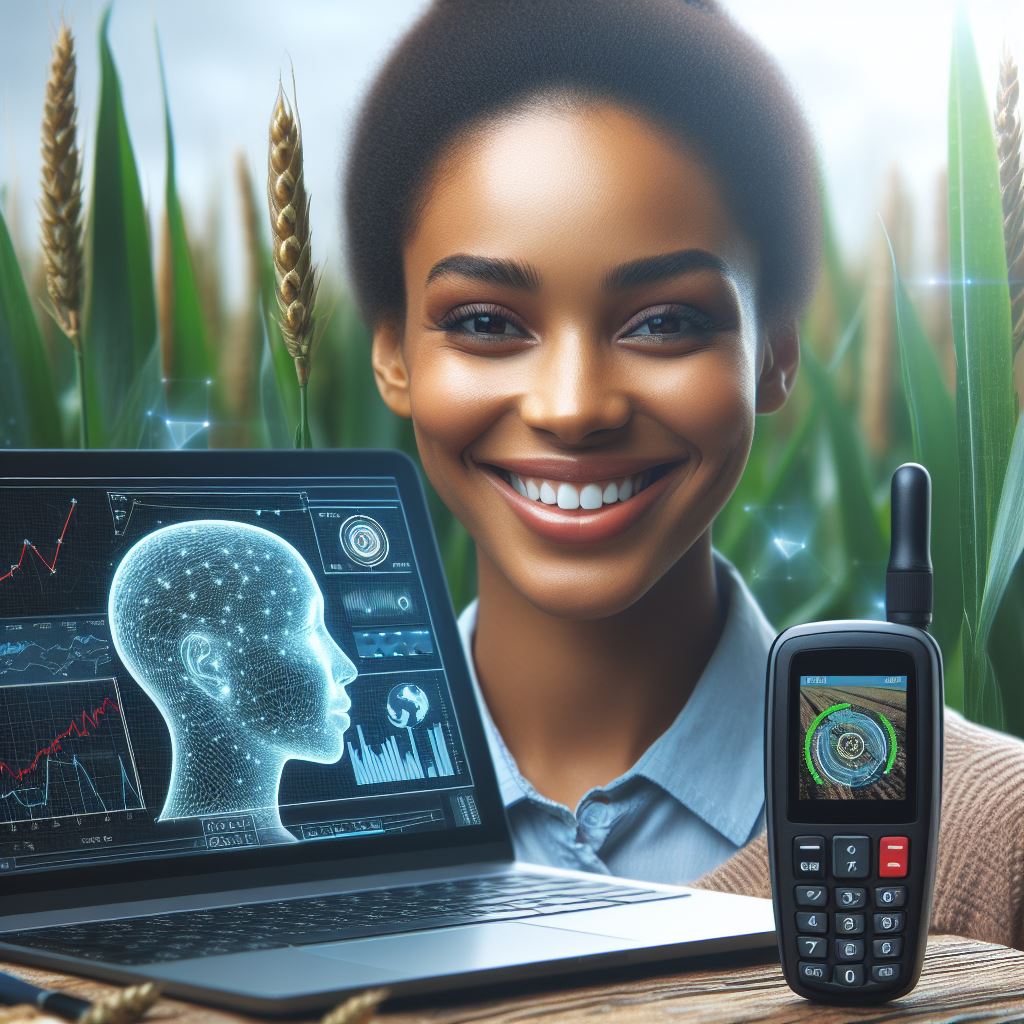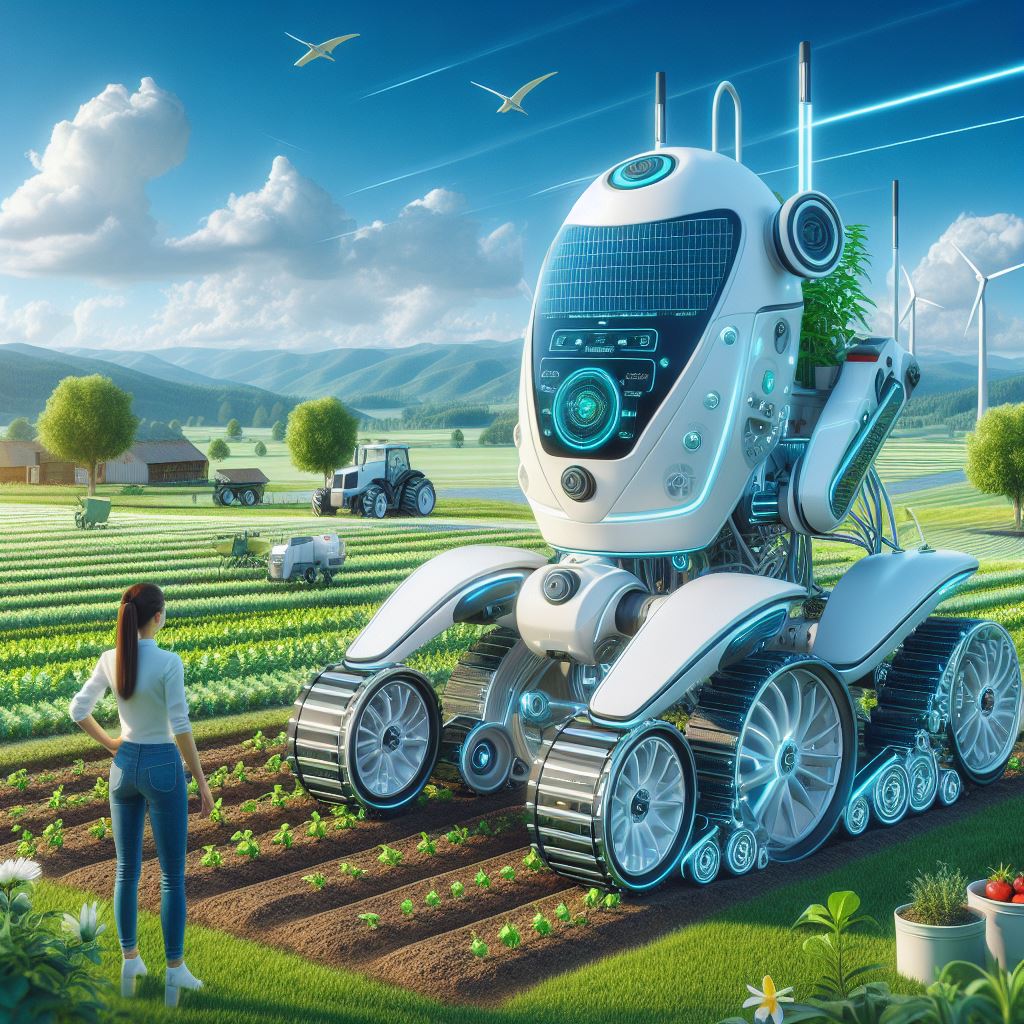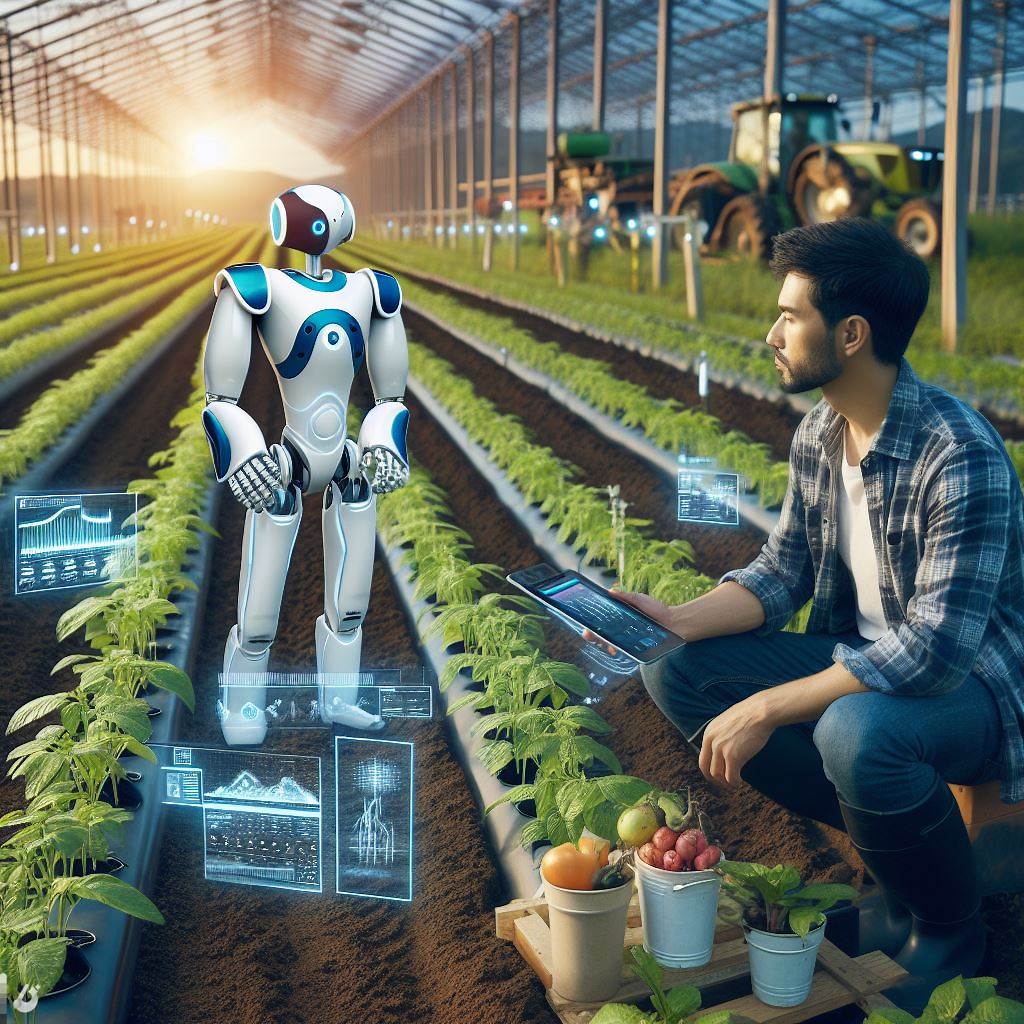Introduction
Let’s explore IoT role in agriculture.
Smart farming is the use of technology to improve agricultural practices and increase productivity.
The role of IoT (Internet of Things) is crucial in modern agriculture by enabling real-time monitoring and automation.
Smart farming is revolutionizing the agricultural industry, bringing efficiency and productivity to new heights.
By harnessing the power of technology, farmers can optimize their operations and make well-informed decisions for better results.
One of the key components of smart farming is the Internet of Things (IoT).
IoT plays a significant role in agriculture today.
It refers to the network of interconnected devices that collect and exchange data through sensors, actuators, and software.
With IoT, farmers can monitor various aspects of their farms in real-time, such as soil moisture levels, weather conditions, and crop health.
Through IoT devices, farmers can access data remotely, allowing them to make timely decisions based on accurate information.
For instance, IoT-enabled sensors can detect moisture levels in the soil and automatically trigger irrigation systems when needed.
This ensures that crops receive adequate water without wasting resources.
IoT also enables farmers to remotely monitor and control farming equipment, such as drones, robots, and irrigation systems.
This automation increases efficiency and reduces the need for manual labor, leading to cost savings and improved productivity.
Furthermore, IoT data can be analyzed to gain valuable insights and optimize farming processes.
Transform Your Agribusiness
Unlock your farm's potential with expert advice tailored to your needs. Get actionable steps that drive real results.
Get StartedBy leveraging data analytics, farmers can predict crop yields, optimize fertilizer usage, and implement proactive pest management strategies.
The role of IoT in agriculture today is fundamental.
Smart farming, powered by IoT, empowers farmers with real-time information, automation, and data-driven decision-making.
With IoT, the agricultural industry can overcome challenges, increase productivity, and embrace sustainable practices for a brighter future.
What is IoT?
Definition of IoT
IoT, short for Internet of Things, refers to the network of interconnected physical devices, vehicles, appliances, and other objects embedded with sensors, software, and network connectivity, enabling them to collect and exchange data.
Explanation of how IoT works
IoT works by connecting devices to the internet or each other, allowing them to communicate, share information, and perform tasks without human intervention. It relies on sensors, communication technologies, and cloud computing.
Examples of how IoT is used in other industries
- In healthcare, IoT is utilized to monitor patient vital signs remotely, track medication adherence, and enable telemedicine consultations.
- The transportation sector implements IoT to optimize route planning, manage fleets in real-time, and enhance driver safety.
- Smart homes use IoT to control appliances, lighting, heating, and security systems, improving convenience, energy efficiency, and security.
- Retail industry leverages IoT for inventory management, personalized shopping experiences, and optimizing supply chain logistics.
- Industrial IoT (IIoT) enables predictive maintenance, streamlines production processes, and ensures worker safety in manufacturing plants.
- Smart cities utilize IoT to monitor and manage traffic flows, reduce energy consumption, detect environmental issues, and improve urban services.
As evident from the diverse applications mentioned above, IoT has become pervasive in various industries, and its potential benefits extend to agriculture as well.
In the agricultural sector, IoT can revolutionize traditional farming practices, leading to more efficient and sustainable farming methods.
To understand how IoT can transform agriculture, let’s delve into its specific applications and use cases in the farming sector.
Read: Drone Tech in Agriculture: A Sky-High View
IoT in Agriculture
Benefits of IoT in agriculture
- Increased efficiency.
- Improved resource management.
- Enhanced decision-making capabilities.
Real-world applications of IoT in farming
- Precision agriculture and sensor technology.
- Livestock monitoring and tracking.
- Supply chain optimization.
The potential impact of IoT in agriculture
The role of technology in agriculture has become increasingly significant in recent years.
One of the key technologies driving this transformation is the Internet of Things (IoT).
By connecting devices and sensors to the internet, IoT enables real-time data collection and analysis, allowing farmers to make informed decisions and optimize their operations.
Let’s explore the benefits, real-world applications, and potential impact of IoT in agriculture.
Benefits of IoT in agriculture
- Increased efficiency: IoT devices, such as smart sensors and automated machinery, can monitor and control various aspects of farming operations. This automation reduces manual efforts, leading to higher productivity and cost savings.
- Improved resource management: IoT enables farmers to monitor soil conditions, moisture levels, and weather forecasts in real-time. With this data, they can apply precise amounts of water, fertilizers, and pesticides, leading to more effective resource utilization and sustainable farming practices.
- Enhanced decision-making capabilities:
IoT provides farmers with accurate and timely insights into their crops, livestock, and machinery. This information empowers them to make data-driven decisions regarding planting, harvesting, disease prevention, and machinery maintenance.
Real-world applications of IoT in farming
- Precision agriculture and sensor technology: IoT sensors placed in fields can monitor soil health, temperature, humidity, and nutrient levels. Farmers can then analyze this data to determine optimal planting times, manage irrigation, and apply fertilizers precisely where needed.
- Livestock monitoring and tracking: IoT devices, such as smart collars, can monitor and track the health, location, and behavior of livestock. This helps farmers identify signs of illness, track animal movements, and ensure their well-being.
- Supply chain optimization: IoT can improve the efficiency of the entire agricultural supply chain. Sensors can monitor storage conditions, track product quality throughout transportation, and provide real-time updates to farmers, distributors, and retailers.
The potential impact of IoT in agriculture
The integration of IoT in agriculture has the potential to revolutionize the industry. Here are some key impacts it can bring:
- Increased productivity and yield: IoT-enabled precision farming techniques can lead to optimized resource usage, resulting in higher crop yields and improved farm profitability.
- Sustainability and environmental preservation: By leveraging IoT data, farmers can implement precise and targeted practices, minimizing the use of water, fertilizers, and pesticides. This reduces the environmental impact of agriculture while ensuring long-term sustainability.
- Improved food safety and quality: IoT devices can continuously monitor various factors such as temperature, humidity, and pest infestation. This helps farmers identify and address potential risks, ensuring the safety and quality of agricultural products.
In short, IoT has immense potential in transforming agriculture into a more efficient, sustainable, and productive industry.
By harnessing the power of real-time data, IoT enables farmers to make informed decisions, optimize resource usage, and improve crop yields.
As the world’s population continues to grow, IoT in agriculture will play a vital role in ensuring food security and meeting the global demand for high-quality, safe, and sustainable food.
Read: AI in Farming: Revolutionizing Crop Management
Challenges and Limitations of IoT in Agriculture
Data security and privacy concerns
- Agriculture today heavily relies on data collection and analysis to optimize farming processes.
- However, with the influx of IoT devices, data security and privacy become major concerns.
- Farmers need to ensure that sensitive data, such as crop yield and weather patterns, are protected from cyber threats.
- Unauthorized access to this information could lead to financial losses or even compromise food safety.
- Encryption protocols and secure data storage systems should be implemented to safeguard farmers’ data.
Cost implications and accessibility
- Integrating IoT technology in agriculture requires a significant financial investment.
- Farmers often face challenges in accessing funds to adopt these advanced systems.
- High costs associated with IoT devices, sensors, and connectivity infrastructure limit their widespread adoption.
- Rural areas with limited internet connectivity face accessibility issues, hindering the implementation of IoT in agriculture.
Integration with existing farming systems
- Many traditional farming systems are not designed to accommodate IoT technology.
- Integrating IoT devices into these systems can be challenging and time-consuming.
- Farmers may need to make modifications to their infrastructure, such as installing compatible sensors and networking equipment.
- Compatibility issues arise when trying to unify existing farming practices with IoT solutions.
Lack of technical skills among farmers
- IoT technology requires technical expertise to install, operate, and maintain.
- Many farmers lack the necessary technical skills to effectively leverage IoT systems.
- Training programs and educational initiatives should be implemented to bridge this gap.
- Providing farmers with the knowledge and skills required to navigate IoT systems can empower them to utilize the technology to its full potential.
In fact, while IoT technology holds immense promise for smart farming, there are several challenges and limitations that need to be addressed.
Data security and privacy concerns, cost implications, accessibility issues, integration with existing farming systems, and the lack of technical skills among farmers all pose hurdles to the widespread adoption of IoT in agriculture.
However, with proper measures, including enhanced data security protocols, financial support, improved connectivity infrastructure, and training programs, these challenges can be overcome.
By embracing IoT in agriculture, farmers can optimize their operations, improve productivity, and contribute to sustainable farming practices.
It is crucial to tackle these challenges head-on to unlock the full potential of IoT in revolutionizing the agricultural industry.
Showcase Your Farming Business
Publish your professional farming services profile on our blog for a one-time fee of $200 and reach a dedicated audience of farmers and agribusiness owners.
Publish Your ProfileRead: Sheep Flock Care: Top Strategies & Insights
Successful Case Studies
Smart irrigation system
- Farmers in California implemented a smart irrigation system using IoT technology.
- The system collected data on soil moisture levels and weather conditions in real-time.
- Based on the data, the system determined the optimal amount of water needed for irrigation.
- This smart technology significantly reduced water usage and increased crop yield.
Crop monitoring and predictive analytics
- Agricultural experts in Iowa employed IoT devices to monitor and analyze crop growth.
- Sensors collected data on temperature, humidity, soil conditions, and crop development.
- This data was then analyzed using predictive analytics algorithms to predict crop health and yield.
- By identifying potential issues early on, farmers could take proactive measures and optimize crop production.
Efficient livestock management
- A rancher in Australia incorporated IoT devices to monitor the health and behavior of cattle.
- Wearable sensors collected data on body temperature, heart rate, and activity levels of each animal.
- This data enabled the rancher to detect any signs of illness or distress promptly.
- By addressing health concerns early, the rancher improved overall herd management and saved costs on veterinary care.
- The IoT devices also helped reduce the risk of diseases spreading among the livestock.
In essence, these case studies demonstrate the significant impact of IoT technology in modern agriculture.
The implementation of smart irrigation systems, crop monitoring with predictive analytics, and efficient livestock management contribute to increased productivity, reduced resource waste, and improved overall profitability for farmers.
By leveraging IoT technology, farmers can make data-driven decisions and optimize various aspects of their farming operations.
These successful cases highlight the potential of IoT in revolutionizing the agricultural sector and ensuring sustainable and efficient farming practices.
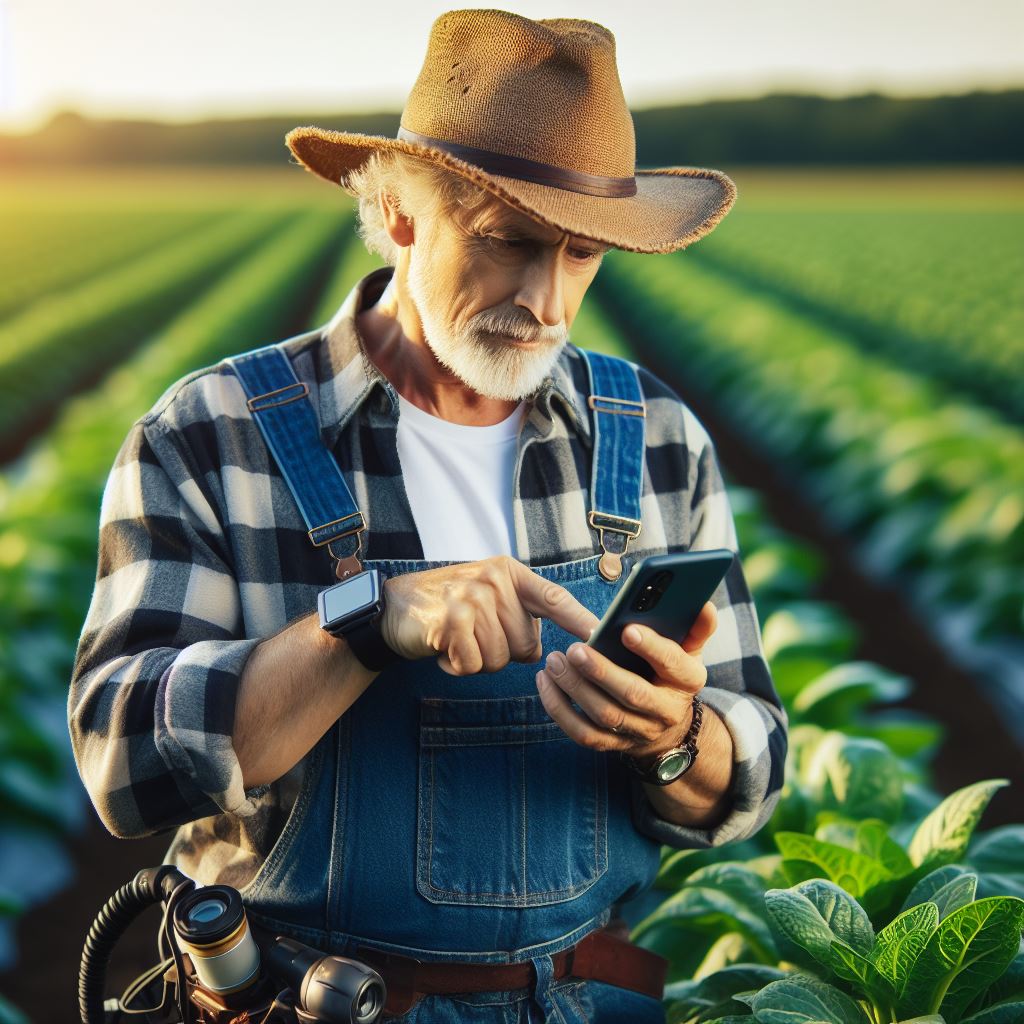
Learn More: AI in Farming: Enhancing Animal Welfare
Discover More: Agri Drones: Beyond Just Surveillance
The Future of IoT in Agriculture
Emerging technologies in smart farming
- Robotics and automation play a crucial role in smart farming, helping improve efficiency and productivity.
- Drones are being used to monitor crop health, identify irrigation needs, and even spray pesticides.
- Precision agriculture utilizes IoT devices and sensors to gather data on soil moisture, temperature, and nutrient levels.
- Artificial intelligence is being employed to analyze vast amounts of data and make informed decisions in real-time.
- Blockchain technology ensures transparency and traceability in the supply chain, boosting consumer confidence.
Predictions for the adoption and growth of IoT in agriculture
- The adoption of IoT in agriculture is expected to increase rapidly in the coming years.
- The global smart farming market is projected to grow at a CAGR of 9.8% from 2021 to 2028.
- The demand for sustainable farming practices and the need for efficient resource management will drive IoT adoption.
- IoT solutions will empower farmers to make data-driven decisions, leading to improved yields and reduced costs.
- IoT platforms will become more affordable and user-friendly, making them accessible to farmers of all sizes.
Potential barriers and opportunities ahead
- The cost of IoT implementation can be a barrier for small-scale farmers with limited financial resources.
- Connectivity issues in rural areas might hinder the widespread adoption of IoT in agriculture.
- Data privacy and security concerns need to be addressed to ensure farmers’ trust in IoT technology.
- Government support in terms of subsidies and policy frameworks can accelerate the adoption of IoT.
- Collaboration between technology providers, farmers, and researchers is essential to overcome challenges and maximize opportunities.
Generally, the future of IoT in agriculture looks promising. Emerging technologies like robotics, drones, and AI are revolutionizing farming practices.
The predictions indicate a significant growth in IoT adoption, driven by the demand for sustainability and resource efficiency.
While barriers exist, such as costs and connectivity issues, opportunities lie in addressing data privacy concerns and fostering collaboration.
With the right support and advancements in IoT technology, agriculture can enter a new era of productivity and sustainability.
Read: 5 Essential Tips for Healthy Cattle Rearing
Conclusion
IoT plays a crucial role in agriculture today by enabling farmers to monitor and control their farms remotely.
Embracing smart farming practices that utilize IoT technology can help improve crop yields, reduce resource wastage, and increase overall efficiency.
The potential of IoT in revolutionizing agriculture is immense, as it has the power to transform traditional farming into a more sustainable and productive industry.
Imagine AI-powered robots tending crops, drones delivering personalized care to each plant, and entire farms operating in perfect harmony with the environment. The possibilities are as vast as the fields themselves.
So, let’s embrace the digital seeds of change and cultivate a future where smart farming blossoms, feeding not just our population but our planet’s health too.
Together, we can ensure that agriculture becomes not just a source of sustenance but a beacon of innovation, ushering in a new era of abundance and sustainability.
The harvest of the future awaits, and it’s ripe for the picking with the help of smart farming and the power of IoT.

